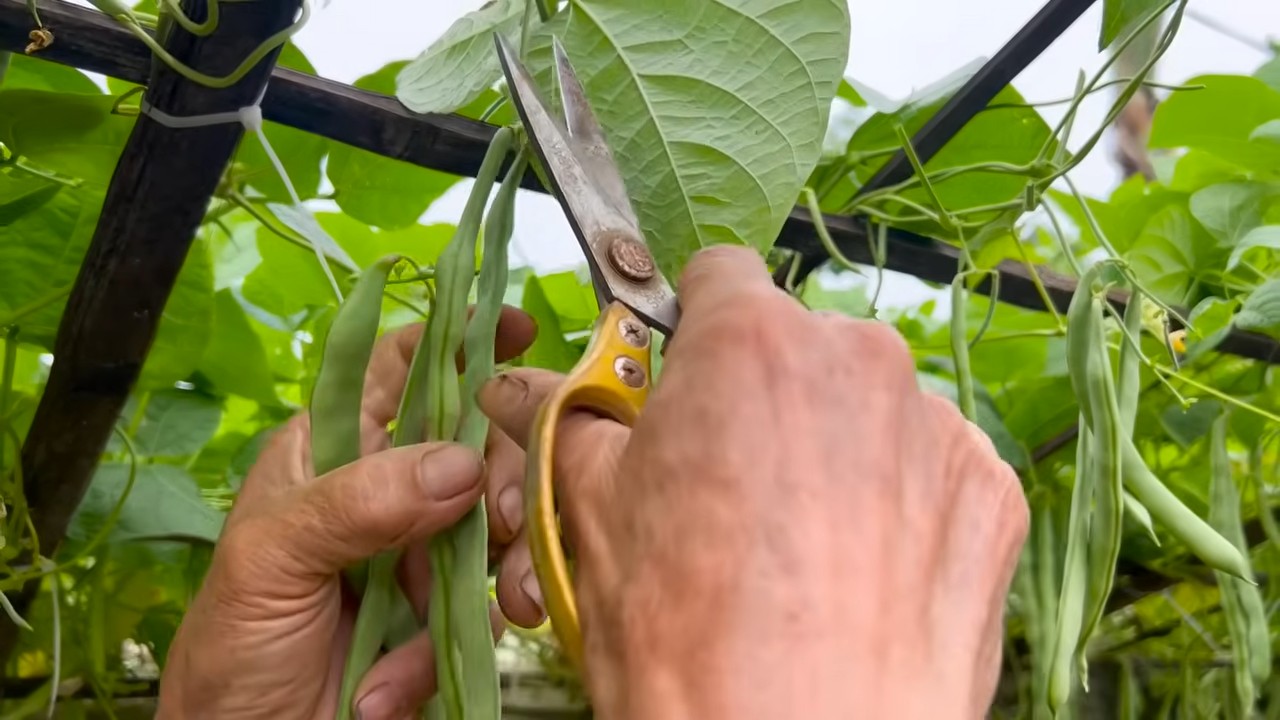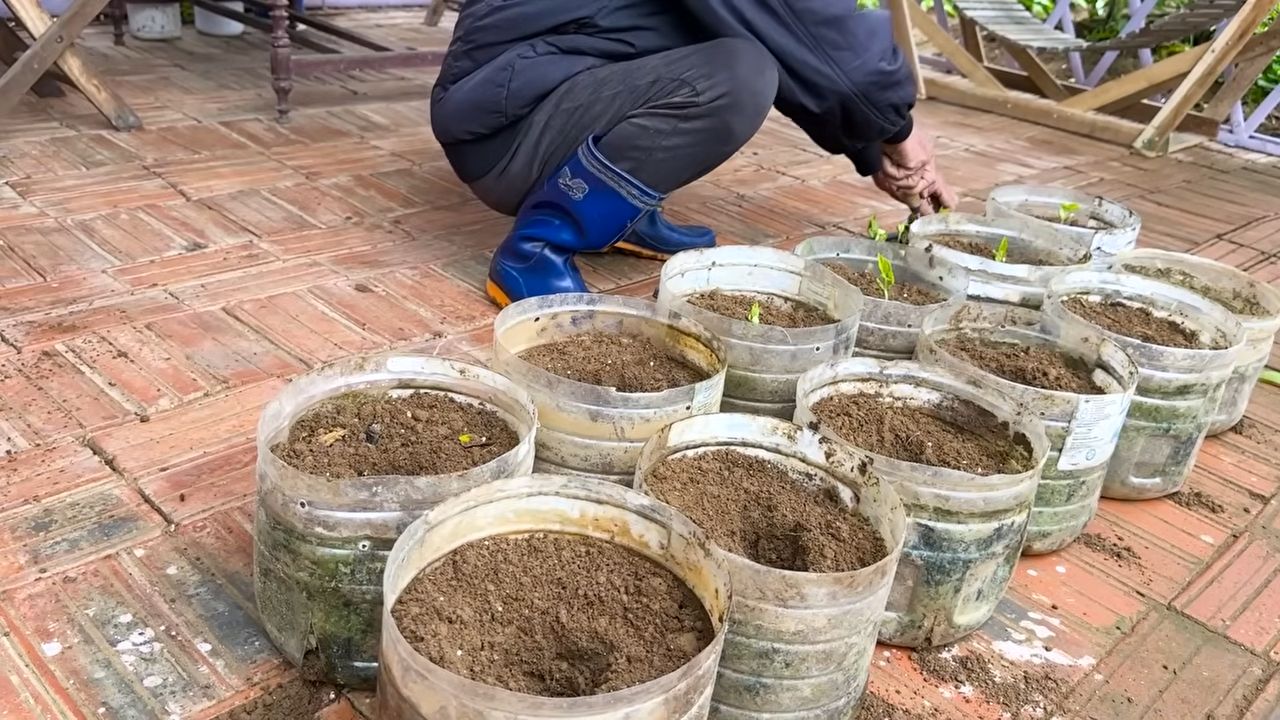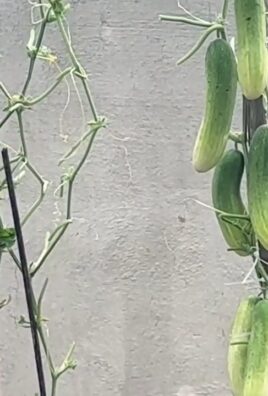Neglected bean plants surprise flowers, and sometimes, that’s the best kind of surprise! Have you ever forgotten about a little corner of your garden, only to stumble upon an unexpected burst of beauty? That’s the magic of gardening, isn’t it? It’s a journey filled with delightful discoveries and, yes, even a few happy accidents.
For centuries, humans have cultivated beans, not just for their nutritional value, but also for their resilience and adaptability. From ancient civilizations to modern-day gardens, beans have been a staple crop, providing sustenance and beauty. But what happens when we, as gardeners, get a little distracted? What if those bean plants, seemingly left to their own devices, decide to reward our neglect with a stunning display of flowers?
Life gets busy, and sometimes our gardens take a backseat. But fear not! This DIY article is here to help you embrace those moments of “oops, I forgot!” and turn them into opportunities. We’ll explore simple tricks and hacks to coax even the most neglected bean plants into producing a bounty of blooms. Because let’s face it, a little bit of effort can go a long way in transforming a forgotten corner into a thriving oasis. I’m excited to share these tips with you, so let’s get started and unlock the hidden potential of your bean plants!

Transform Neglected Bean Plants into Blooming Beauties: A DIY Guide
Hey plant friends! Do you ever feel like your bean plants are just ignoring you? They’re growing, but there’s no sign of flowers? Don’t worry, it happens to the best of us! I’ve neglected a few bean plants myself and was then surprised when they suddenly bloomed after all. And the best part: with a few simple tricks, you can even encourage them to flower! In this article, I’ll show you how to get your neglected bean plants back on track and encourage them to produce beautiful blossoms.
What Your Bean Plant Really Needs: A Checklist
Before we get started, it’s important to understand what your bean plant actually needs to be happy and to bloom. Here is a small checklist:
- Sun: Beans love the sun! They need at least 6-8 hours of direct sunlight per day.
- Water: Regular watering is important, especially during the flowering period. The soil should be moist, but not soggy.
- Nutrients: Beans are heavy feeders and need sufficient nutrients, especially phosphorus and potassium, to form flowers.
- Support: Pole beans need a trellis to hold on to.
- Protection: Protect your plants from pests and diseases.
Step-by-Step Guide to Promoting Flowering
Okay, let’s get down to business! Here is a detailed guide on how to get your neglected bean plants back on course:
- Inspection: Take a close look at your bean plants. How do they look? Are the leaves yellow or brown? Are there signs of pests or diseases?
- Removal of dead leaves and shoots: Cut off all dead or damaged leaves and shoots. This helps the plant to concentrate its energy on the healthy parts. Use clean and sharp garden shears to avoid infections.
- Soil analysis: Check the soil. Is it dry or too wet? Does it feel firm or loose? Good soil is loose, well-draining, and rich in nutrients.
- Check the location: Are your bean plants in a sunny spot? If not, move them to a place where they get enough sunlight. Be sure not to transplant them during the hottest part of the day to avoid stress.
- Adjust watering: Water your bean plants regularly, but avoid waterlogging. Let the top layer of soil dry out slightly between waterings. It’s best to water early in the morning or late in the evening to minimize evaporation.
- Improve the soil: Gently loosen the soil around the plants to improve aeration. Add compost or organic fertilizer to enrich the soil with nutrients.
- Check the support: Do your pole beans have a sturdy support? If not, provide them with a new one or repair the old one. Make sure the support is high enough so the plants have enough space to grow.
- Fertilizing: Now comes the most important part! Beans need phosphorus and potassium to form flowers. Use a special fertilizer for flowering plants or an organic fertilizer like comfrey tea or wood ash. Be sure to follow the dosage instructions on the packaging to avoid over-fertilizing.
- Phosphorus boost: To give an extra boost to flower formation, you can provide a phosphorus boost. Dissolve some bone meal in water and water the plants with it. Bone meal is a natural source of phosphorus and helps the plants to form strong flowers.
- Potassium boost: Potassium is also important for flower formation. Wood ash is a good source of potassium. Sprinkle some wood ash around the plants and work it lightly into the soil. Be sure to use only wood ash from untreated wood.
- Foliar feeding: A foliar feeding can help to quickly correct nutrient deficiencies. Dissolve some liquid fertilizer in water and spray the leaves of the plants with it. Be sure to apply the foliar feed in the early morning or late evening to avoid burns.
- Regular checks: Check your bean plants regularly for pests and diseases. The sooner you spot a problem, the easier it is to fix.
- Combat pests: Aphids, spider mites, and bean beetles can infest bean plants. Combat them with natural remedies such as neem oil, insecticidal soap, or ladybugs.
- Prevent diseases: Fungal diseases like powdery mildew and bean rust can damage bean plants. Ensure good air circulation, avoid waterlogging, and remove affected leaves to prevent the spread of diseases.
- Promote beneficial insects: Encourage beneficial insects like ladybugs, lacewings, and parasitic wasps, which combat pests naturally. Plant flowering plants near your bean plants to attract beneficial insects.
Additional Tips for Abundant Flowering
- Pinching: Pinching off the side shoots can promote flowering. Remove the side shoots to direct the plant’s energy to the main stems and flowers.
- Regular harvesting: Harvest the beans regularly to encourage the plant to form new flowers. The more beans you harvest, the more flowers the plant will produce.
- Patience: Be patient! It may take a few weeks for your bean plants to respond to the treatment and form flowers. Don’t give up and stick with it!
Why Aren’t My Bean Plants Flowering? Possible Causes
There are several reasons why bean plants may not flower. Here are some of the most common causes:
- Too little sunlight: Beans need at least 6-8 hours of direct sunlight per day.
- Too little water: Drought can inhibit flowering.
- Too few nutrients: Beans need phosphorus and potassium to form flowers.
- Too much nitrogen: Too much nitrogen can lead to lush leaf growth but few flowers.
- Pests or diseases: Pests and diseases can impair flower formation.
- Stress: Stress from transplanting, extreme temperatures, or incorrect watering can inhibit flowering.
- Variety: Some bean varieties flower later than others.
Conclusion: Success with Patience and Care
I hope this guide helps you transform your neglected bean plants into blooming beauties! Remember that patience and regular care are the keys to success. With the right conditions and a little love, your bean plants will soon reward you with beautiful flowers and delicious beans. Happy gardening!

Conclusion
So, there you have it! Transforming those seemingly neglected bean plants into a vibrant display of flowers is not only possible, it’s surprisingly simple and incredibly rewarding. This DIY trick isn’t just about aesthetics; it’s about understanding the natural processes of your plants and gently nudging them towards their full potential. Think of it as a plant whisperer’s secret weapon!
Why is this a must-try? Because it breathes new life into plants you might have otherwise given up on. It’s a sustainable approach to gardening, reducing waste and maximizing the beauty you can cultivate from what you already have. Plus, the sheer joy of witnessing those first blossoms appear after a little TLC is an experience that every gardener, novice or expert, should savor.
But the beauty of this method lies in its adaptability. Feel free to experiment! Perhaps you could try different types of fertilizer, adjusting the concentration based on the specific needs of your bean variety. Consider adding a foliar spray of seaweed extract to further boost nutrient absorption and encourage flowering. You could even try companion planting, introducing flowers like marigolds or nasturtiums near your bean plants to attract pollinators and create a more vibrant ecosystem.
Remember, observation is key. Pay close attention to your plants’ response to the treatment. Are they showing signs of improvement? Are the leaves becoming greener? Are flower buds starting to form? Adjust your approach accordingly. Gardening is a journey of learning and discovery, and every plant is a teacher.
We wholeheartedly encourage you to try this **DIY trick** on your own neglected bean plants. Don’t be afraid to get your hands dirty and embrace the process. The results might just surprise you! And more importantly, we want to hear about your experience. Share your before-and-after photos, your tips and tricks, and any variations you tried in the comments below. Let’s create a community of plant lovers who are passionate about bringing beauty and abundance to their gardens. Together, we can unlock the hidden potential of our plants and transform our outdoor spaces into thriving havens. So go ahead, give your bean plants a second chance, and prepare to be amazed by the power of a little bit of care and a whole lot of love. Happy gardening!
Frequently Asked Questions (FAQ)
Q: My bean plants look really bad. Is it too late to try this trick?
A: It’s definitely worth a try! Even if your bean plants appear to be in rough shape, they might still have some life left in them. The key is to assess the overall health of the plant. Are the stems still pliable? Are there any signs of new growth, even small ones? If so, there’s a good chance you can revive them. However, if the plants are completely dried out and brittle, or if they’re showing signs of severe disease, it might be too late. But don’t give up without trying! Start with the basic steps – pruning, watering, and fertilizing – and see how they respond. You might be surprised at their resilience.
Q: What kind of fertilizer should I use?
A: A balanced fertilizer with an NPK ratio (nitrogen, phosphorus, potassium) that is slightly lower in nitrogen and higher in phosphorus and potassium is ideal for encouraging flowering. Look for a fertilizer specifically formulated for flowering plants or vegetables. A 10-20-20 or 5-10-10 fertilizer would be a good choice. Avoid fertilizers that are high in nitrogen, as they will promote leafy growth at the expense of flowers. You can also use organic options like bone meal (for phosphorus) and wood ash (for potassium). Remember to follow the instructions on the fertilizer packaging carefully to avoid over-fertilizing, which can damage your plants.
Q: How often should I water my bean plants after applying this trick?
A: Water deeply but infrequently. Allow the soil to dry out slightly between waterings. Overwatering can lead to root rot, which is detrimental to plant health. Check the soil moisture by sticking your finger about an inch into the soil. If it feels dry, it’s time to water. When you do water, make sure to soak the soil thoroughly, allowing the water to drain out of the bottom of the pot or into the surrounding soil. The frequency of watering will depend on factors like the weather, the type of soil, and the size of the pot.
Q: How long will it take to see results?
A: The time it takes to see results will vary depending on the condition of your bean plants and the growing conditions. In general, you should start to see some improvement within a week or two. The leaves might become greener, and you might notice new growth emerging. Flower buds typically appear within a few weeks of consistent care. Be patient and persistent, and don’t get discouraged if you don’t see immediate results. Remember that gardening is a process, and it takes time for plants to respond to treatment.
Q: Can I use this trick on other types of plants?
A: While this trick is specifically tailored for bean plants, the principles behind it can be applied to other flowering plants as well. The key is to understand the specific needs of the plant you’re trying to revive. Pruning, proper watering, and balanced fertilization are essential for most flowering plants. However, the type of fertilizer and the watering frequency might need to be adjusted based on the plant’s requirements. Research the specific needs of your plant before applying this trick.
Q: My bean plants are in a container. Do I need to repot them?
A: If your bean plants are root-bound (the roots are circling around the inside of the pot), repotting them into a larger container can be beneficial. This will give the roots more room to grow and access nutrients. Choose a pot that is at least a few inches larger in diameter than the current pot. Use a well-draining potting mix. Gently remove the plant from its current pot, loosen the roots, and place it in the new pot. Fill the pot with potting mix, water thoroughly, and place the plant in a sunny location.
Q: What if I don’t have access to fertilizer? Are there any natural alternatives?
A: Yes, there are several natural alternatives to commercial fertilizers. Compost tea is a great option for providing nutrients to your plants. You can make compost tea by steeping compost in water for a few days and then using the liquid to water your plants. Bone meal is a good source of phosphorus, which is essential for flowering. Wood ash is a good source of potassium. You can also use coffee grounds as a soil amendment, as they are rich in nitrogen. However, be sure to use them sparingly, as they can be acidic.
Q: How do I prevent my bean plants from becoming neglected in the first place?
A: Prevention is always better than cure! The best way to prevent your bean plants from becoming neglected is to establish a regular care routine. This includes watering them regularly, fertilizing them as needed, and pruning them to remove dead or diseased foliage. Also, be sure to monitor your plants for signs of pests or diseases and take action promptly if you notice any problems. By paying attention to your plants’ needs and providing them with consistent care, you can keep them healthy and thriving.




Leave a Comment